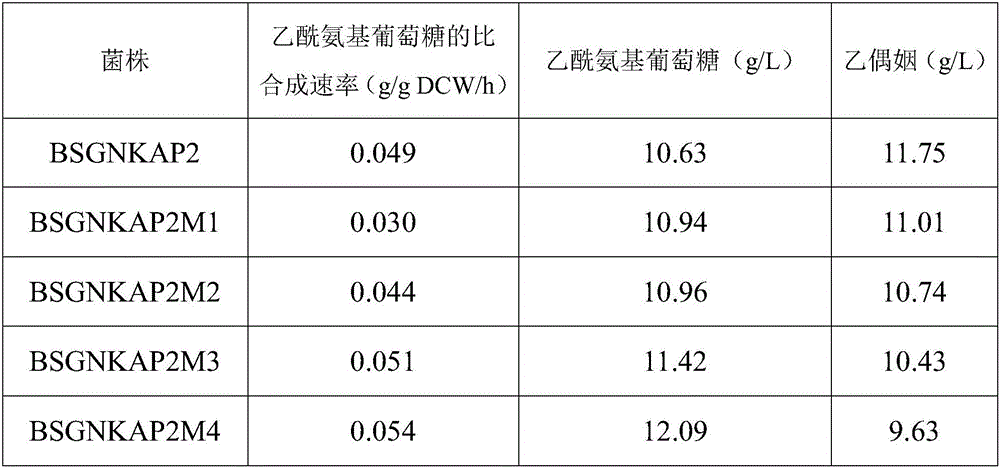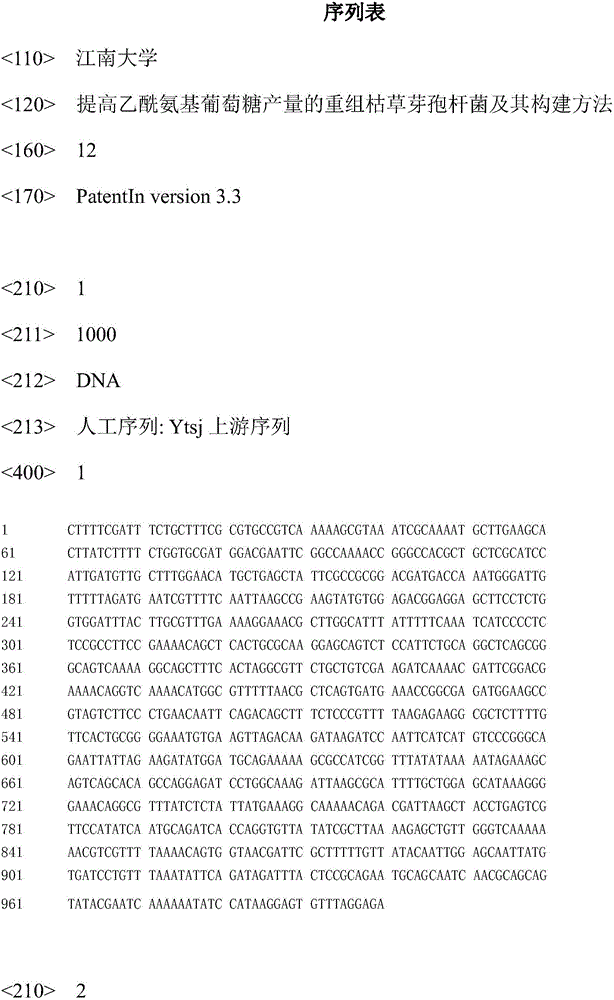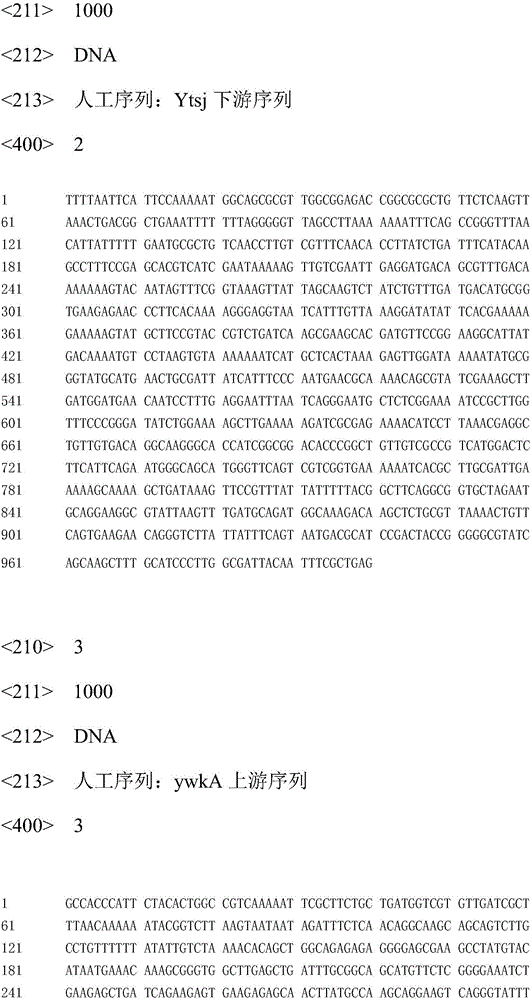Recombinant bacillus subtilis for improving yield of acetylglucosamine and building method of recombinant bacillus subtilis
A Bacillus subtilis, acetamido technology, applied in the field of genetic engineering, can solve the problems of low conversion efficiency of acetylglucosamine/glucose, insufficient supply of α-ketoglutarate, low carbon source utilization efficiency, etc., and achieves the promotion of acetylglucosamine. The effect of accumulation, reduction of by-product formation, and yield reduction
- Summary
- Abstract
- Description
- Claims
- Application Information
AI Technical Summary
Problems solved by technology
Method used
Image
Examples
Embodiment 1
[0036] Construction of Bacillus subtilis BSGNKAP
[0037]According to the content disclosed in Chinese patent application 201510761678.6, B. subtilis168ΔnagPΔgamPΔgamAΔnagAΔnagBΔldhΔpta::lox72 was used as the host, and the promoter P xylA ,P 43 Controlling the recombinant expression of glmS and GNA1, free expression of GNA1 gene with pP43-GNA1 plasmid, pM7Z6M-P xylA The -glmS plasmid integrates and expresses the glmS gene, and then knocks out the glucokinase encoding gene glck, the phosphoenolpyruvate carboxylase encoding gene pckA and the pyruvate kinase encoding gene pyk on this basis, and obtains Bacillus subtilis BSGNKAP.
Embodiment 2
[0039] Construction of recombinant Bacillus subtilis BSGNKAPM1
[0040] According to the upstream and downstream sequences of the malate dehydrogenase gene ytsJ of Bacillus subtilis 168 (as shown in the sequence table SEQ ID NO.1) purchased from the American Type Microorganism Collection Center with the number ATCC No.27370 published on the NCBI, and Bo As for the sequence of the lyomycin resistance gene zeo, a gene knockout frame encoding malate dehydrogenase whose sequence is shown in SEQ ID NO.2 is constructed.
[0041] The constructed malate dehydrogenase encoding gene knockout frame was transformed into the Bacillus subtilis BSGNKAP obtained in Example 1, and the bleomycin resistance in the malate dehydrogenase encoding gene knockout frame was transformed through homologous recombination. The gene zeo replaced the malate dehydrogenase gene ytsJ in Bacillus subtilis BSGNKAP, which blocked the conversion of malate into pyruvate in the host bacteria. Through bleomycin resist...
Embodiment 3
[0043] Construction of recombinant Bacillus subtilis BSGNKAPM2
[0044] According to the upstream and downstream sequences of the malate dehydrogenase gene ywkA of Bacillus subtilis 168 (as shown in the sequence table SEQ ID NO.1) purchased from the American Type Microorganism Collection Center with the number ATCC No.27370 published on NCBI, and Bo As for the sequence of the lyomycin resistance gene zeo, a gene knockout frame encoding malate dehydrogenase whose sequence is shown in SEQ ID NO.2 is constructed.
[0045] The constructed malate dehydrogenase encoding gene knockout frame was transformed into the Bacillus subtilis BSGNKAPM1 obtained in Example 2, and the bleomycin resistance in the malate dehydrogenase encoding gene knockout frame was transformed through homologous recombination The gene zeo replaced the malate dehydrogenase gene ywkA in Bacillus subtilis BSGNKAPM1, which blocked the conversion of malate into pyruvate in the host bacteria. Through bleomycin resista...
PUM
 Login to View More
Login to View More Abstract
Description
Claims
Application Information
 Login to View More
Login to View More - R&D
- Intellectual Property
- Life Sciences
- Materials
- Tech Scout
- Unparalleled Data Quality
- Higher Quality Content
- 60% Fewer Hallucinations
Browse by: Latest US Patents, China's latest patents, Technical Efficacy Thesaurus, Application Domain, Technology Topic, Popular Technical Reports.
© 2025 PatSnap. All rights reserved.Legal|Privacy policy|Modern Slavery Act Transparency Statement|Sitemap|About US| Contact US: help@patsnap.com



